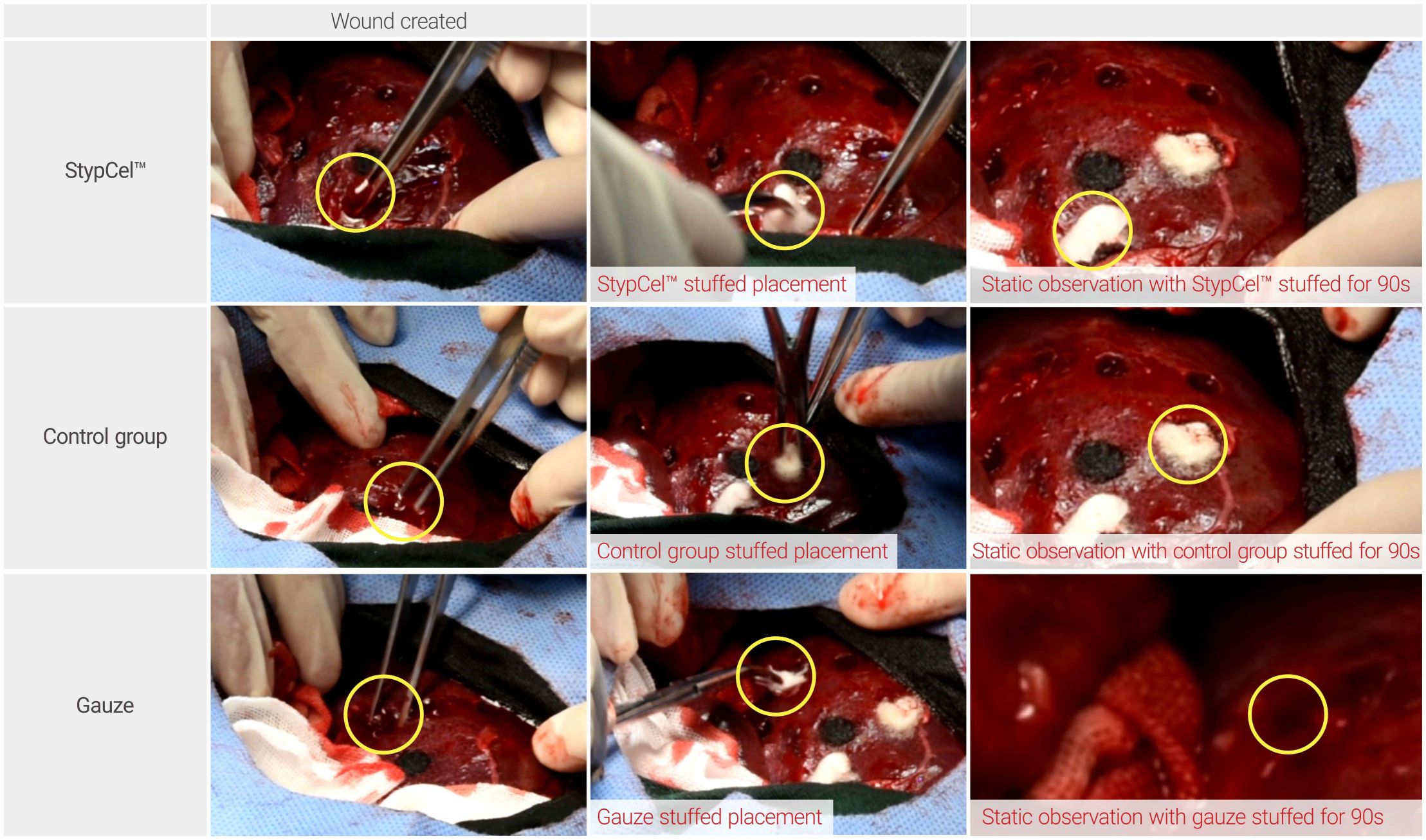

StypCel™, is a new non-woven, absorbable hemostat based on ORC. It is used to assist the control of capillary, vein, and small artery bleeding when surgical ligation and conventional control are impractical or invalid.
To evaluate the hemostatic efficacy of StypCel™, an observational pre-clinical experiment was conducted using Bama miniature pigs. In the experiment, StypCel™ was compared to another commonly used ORC-based hemostat (hereinafter “control group”).
In this experiment, three types of bleeding model were created on different organs to simulate different surgical situations.
Type 1. Blood oozing on spleen. Hemostat covered the surface for hemostasis.
Type 2. Turbulent blood flow on liver. Hemostat filled the wound cavity for hemostasis.
Type 3. Punctate hemorrhage on mesentery. Hemostat covered the surface for hemostasis.
StypCel™ demonstrated non-inferior hemostatic effect, showing less or equal blood loss compared to the control group.
In summary, the hemostatic efficacy of StypCel™ has been preliminarily verified in the swine pre-clinical experiment.
--------------------------- Experiment Details -----------------------
Bama miniature pig was anesthetized with pentobarbital. Normal blood pressure was maintained intraoperatively.
Type 1. Blood oozing on spleen
- A 2cm diameter oozing wound was created
- 5.0*5.0cm hemostat was placed on the wound and gently pressed, then left on the wound
- After 90s, the hemostat was rinsed with saline to observe if hemostasis was achieved. Degree of bleeding was also estimated by comparing the size of dried blood on the hemostat
Result:Hemostasis was achieved within 90s for both groups, and StypCel™ demonstrated less bleeding compared to that of the control.

Type 2. Turbulent blood flow on liver
- A 5mm diameter hole was created
- 1.5*1.0cm hemostat was placed on the wound
Result:Both the wound of StypCel™ and control group stopped bleeding in 90 seconds. While the wound covered by gauze was still bleeding.

Type 3. Punctate hemorrhage on mesentery
- A 1cm incision on vessel was created
- 3.0*3.0cm hemostat was placed on the wound and gently pressed, then left on the wound
- After 90s, the hemostat was rinsed with saline to observe if hemostasis was achieved. Degree of bleeding was also estimated by comparing the size of dried blood on the hemostat
Result: Hemostasis was achieved within 90s for both groups, and StypCel™ demonstrated less bleeding compared to that of the control.

In this pre-clinical experiment, performance of StypCel™ was preliminarily confirmed, as in all three bleeding models it demonstrated non-inferior hemostatic efficacy when compared to well commercialized ORC hemostat.With promising result of this experiment, please stay tuned for more in-depth exploration of our hemostat!






